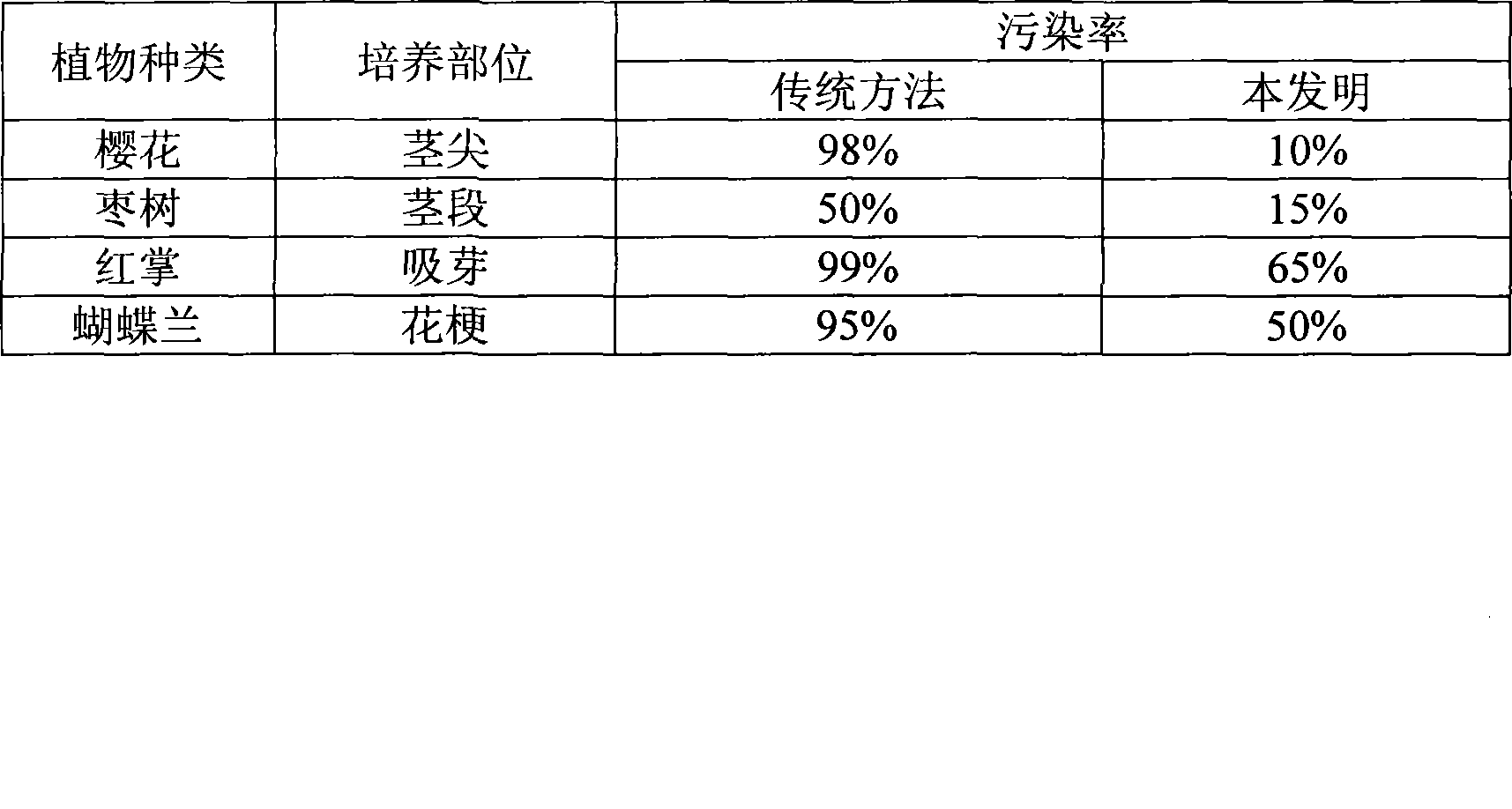Surface sterilizing method of explant
A surface sterilization and explant technology, applied in the field of plant tissue culture, can solve the problems of pollution, tissue culture operation failure, difficult to kill microorganisms, etc., and achieve the effect of improving the sterilization effect
- Summary
- Abstract
- Description
- Claims
- Application Information
AI Technical Summary
Problems solved by technology
Method used
Image
Examples
Embodiment 1
[0011] Take jujube stems, scrub the surface dirt with 75% alcohol solution, soak the stems in 70% alcohol solution for 15 minutes, and then soak them in disinfectant containing 0.1% mercury chloride and 0.5% Tween 5min. During the soaking and disinfection process, gently stir with a glass rod from time to time to promote full contact between all parts of the material and the disinfection solution, drive out air bubbles, and make the disinfection thorough. Pour out the disinfectant solution 1-2 minutes before the time is up, and immediately pour sterile water into it and shake it gently. Rinse with sterile water for about 3 minutes each time, 8-10 times. The entire sterilization process is performed under sterile conditions.
Embodiment 2
[0013] Pick Phalaenopsis peduncles and cut off unnecessary parts, then scrub with 70% alcohol solution to remove surface dirt. After cleaning, soak the pedicel in 75% alcohol solution for 1 min, and then soak it in a disinfection solution with a sodium hypochlorite concentration of 6% and a Tween concentration of 0.1% for 10 min. During the soaking process, use a glass rod to gently stir from time to time to promote full contact between all parts of the material and the disinfection solution, to drive out air bubbles, and to make the disinfection thorough. 1-2 minutes before the time is up, after pouring out the sodium hypochlorite solution, immediately pour in sterile water and shake gently. Rinse with sterile water for about 3 minutes each time, 3-5 times. The entire sterilization process is performed under sterile conditions.
Embodiment 3
[0015] Take the stem tip of the cherry blossoms, wash off the dirt on the surface with 73% alcohol solution, and then put it into a disinfection solution with a sodium hypochlorite concentration of 4% and a Tween concentration of 0.3% for 15 minutes. During the soaking process, use a glass rod to gently stir from time to time to promote full contact between all parts of the material and the disinfection solution, to drive out air bubbles, and to make the disinfection thorough. Pour out the sodium hypochlorite disinfectant 1-2 minutes before the time is up, and immediately pour sterile water into it and shake it gently. Rinse with sterile water for about 3 minutes each time, 3-5 times. The entire sterilization process is performed under sterile conditions.
PUM
 Login to View More
Login to View More Abstract
Description
Claims
Application Information
 Login to View More
Login to View More - R&D
- Intellectual Property
- Life Sciences
- Materials
- Tech Scout
- Unparalleled Data Quality
- Higher Quality Content
- 60% Fewer Hallucinations
Browse by: Latest US Patents, China's latest patents, Technical Efficacy Thesaurus, Application Domain, Technology Topic, Popular Technical Reports.
© 2025 PatSnap. All rights reserved.Legal|Privacy policy|Modern Slavery Act Transparency Statement|Sitemap|About US| Contact US: help@patsnap.com

